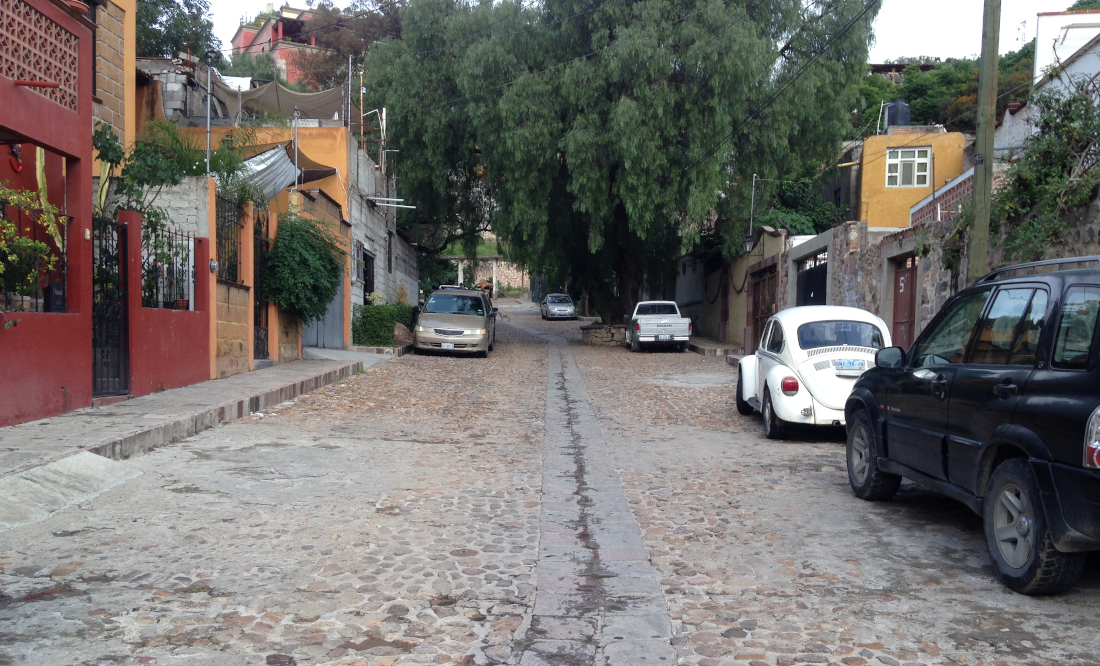
by Dr David, Editor / Publisher
In terms of violence in Mexico, San Miguel de Allende has a good reputation. Ours is a big tourist town and the local money wants to keep everything from going south.
In terms of violence in San Miguel, Colonia Allende has a bad reputation. That's where my girlfriend lives and where I've been spending a lot of time there, especially since her son moved to Chile.
The neighborhood grew up around the spring, manatial in Spanish, that still flows here. The impression I get from the few people I know here on Calle Manatial, is that everyone has always lived here. Before these modern, concrete and brick houses there were other more humble abodes, but the families remain the same.
The blood feud that makes Colonia Allende's colorful reputation also goes back generations. I don't know the details surrounding this Mexican version of the Hatfields and the McCoys, but a general understanding of human nature tells me that it started with something relatively small. I imagine a dispute about a property line, whether that tree is yours or mine.
I might ask Coco, who lives across the street, to explain it to me, but in these situation asking makes you look stupid or like you are working for the cops.
Besides, I'm odd enough in this neighborhood already; the skinny Santa Claus extranjero (stranger), who walks the cute brown dog.
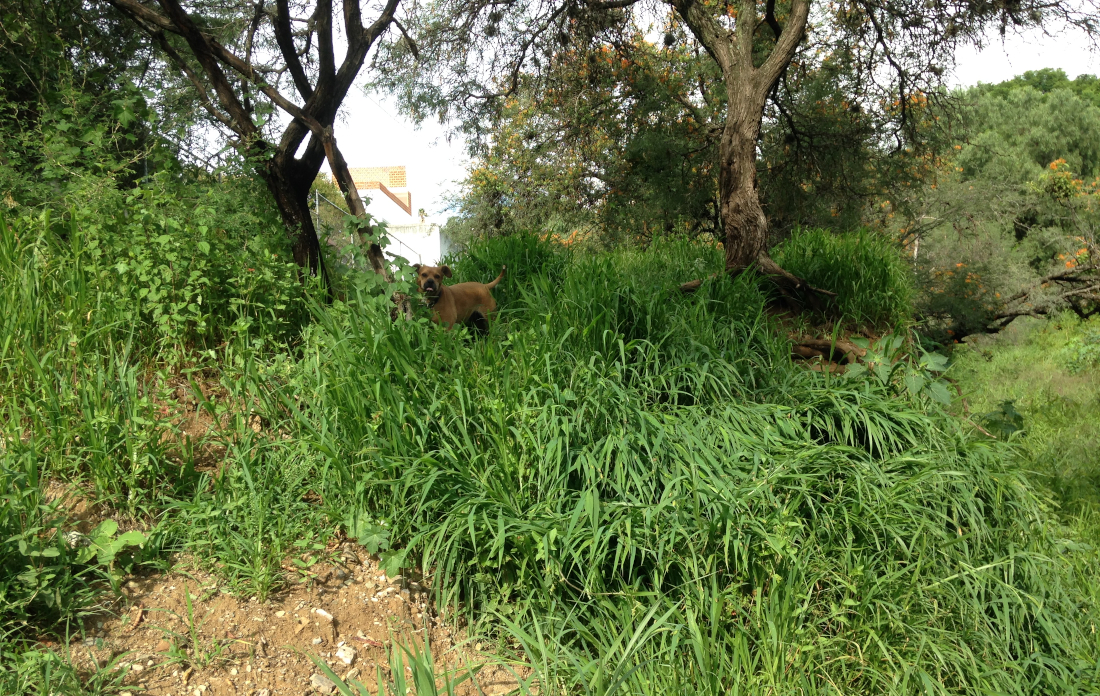
Veronica and I stay out of trouble. We don't go wandering around the neighborhood after dark. There was a fight just down the block from us that involved some stone throwing. We heard about it a week or two later. We're pretty far out of the loop. Coco complained that a stray rock hit his uncle's car, the uncle who runs the little bodega on the left side of the road, where I buy candles, not the one on the right, where I buy onions.
In three years, we've heard gunshots only once and those were distant, a few streets away, up the hill, towards the libramiento. Machetes seem to be the weapon of choice.
Just before our time there was a fight involving machetes. It seems one crazy fellow could not be convinced to stop calling out insults in front of the house where a rival gang member's mother lives. After a couple days of this emissaries went and talked with the crazy fellow's compañeros (companions), who were less than obliging, "He's crazy. We can't do anything with him." The emissaries, taking matters into their own hands, cut a hand off of the offender. Reasonable as this action might have seemed to the compañeros of the now hospitalized crazy fellow, it was an action that could not go unanswered. And so an inter-gang battle was fought, with machetes, just down the block.
When things get out of hand (pardon the pun) in the neighborhood the police show up in force. Three or four pickups with four or five machine gun-toting men in the back of each, hooded in balaclavas, drive impressively up the street. Their return trip, after turning around at the dead end always seems to me like an ignoble retreat, but what do I know?
After working for a while in front of this computer each morning I cut up some watermelon and take it, my yoga mat and my mp3 player up to the roof. Here at Veronica's walking the dog, Canela, has become part of this routine.
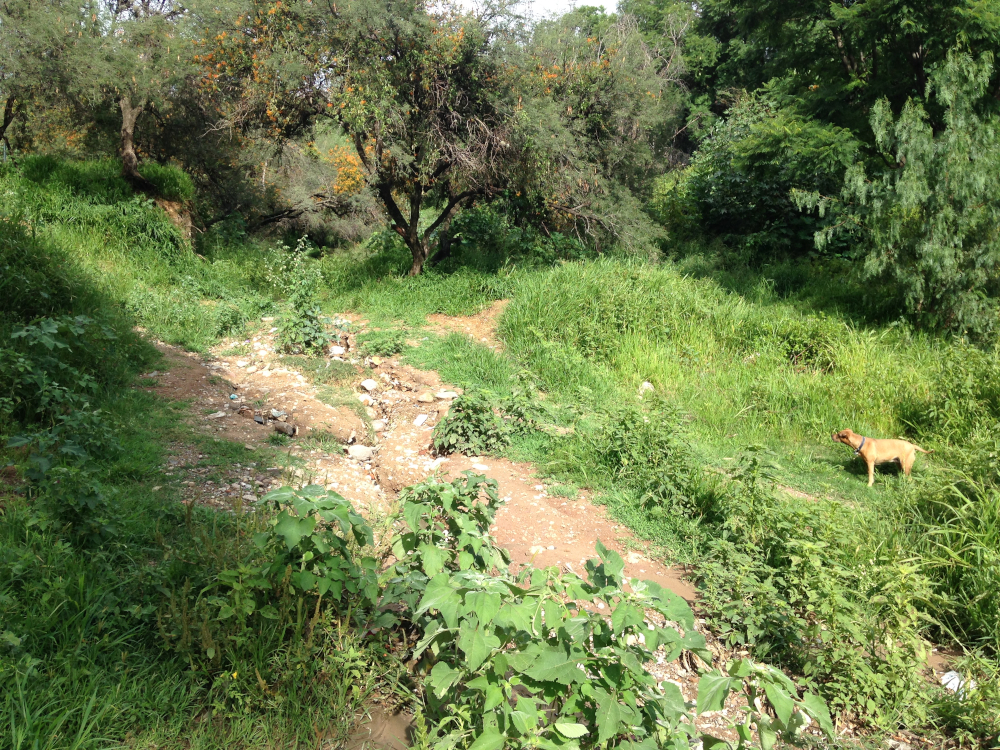
Our route takes us through a little park. The top part of the park is a ravine, a narrow gulch that channels a large amount of the mountain's runoff during a rain. The lower part of the park, after the ravine suddenly widens, is almost completely filled with an an elevated concrete soccer field; elevated to keep the mud and garbage washed down the ravine each rain from covering it.
Recently, extending Canela's morning outing, I've started doing my yoga routine in the park while that good dog explores the ravine. We both like the extra time in nature. (Why didn't I think of this arrangement before, and what am I still not getting?)
There's not a lot of level ground, but on the last, lowest grassy mound of the ravine, just above the playing field, where the neighbor tethered a horse for a couple of weeks, is a flat space where a mat of straw keeps the grass from growing. There I spread my mat, plug in my ear-buds to listen to my audio book, eat my watermelon and perform my yoga.
These days I'm listening to The Brother's Karamazov. I read it when I was a teenager, but, so much has change since them. In it Dostoevsky defines life in the guise of three brothers: the sensualist, the rationalist and the religious.
(The study of the humanities, especially great literature, is essential to our Enlightenment culture. Kids today, most of whom have hardly read a book, maintain their conviction that they already know it all only by believing that nothing of importance happened before 2010.)
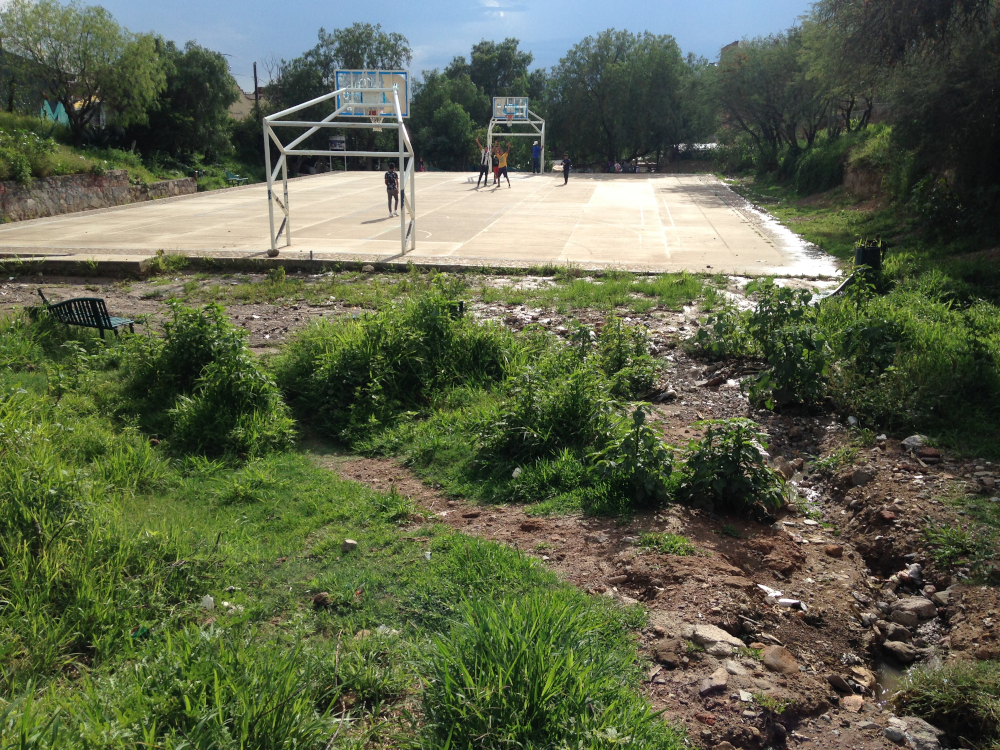
A few days ago in the park I was almost done with my yoga routine and about half way through listening to Dostoevsky's most famous chapter, The Grand Inquisitor. In it Ivan, the rationalist, is conveying to Alyosha, the religious, his prose poem in which the day after burning alive one hundred "heretics" in a public spectacle, the Grand Inquisitor becomes aware, in a crowd through which he is passing, of Christ himself by the fact that Jesus has just brought back to life a little girl, "Maiden arise," now sitting up inside her coffin.
The Grand Inquisitor has Christ arrested. The guards, rendered timid by their human nature, aware of whom they are arresting, are yet so enslaved by the terror they feel of their earthly master, that they comply.
The Grand Inquisitor, visiting Jesus in prison late that night, complains of his captive's inhuman, impossible gospel and explains his own, more realistic philosophy, a more brutal and ultimately more merciful understanding; "Men want miracles and bread." Rather than let Jesus' return spoil the Church's plans for world domination and a stupefied, but happy humanity, the Grand Inquisitor intends to kill him, to burn him to death on the morrow
Ivan, objecting to the human suffering needed to bring the final, glorious redemption, asks Alyosha if, knowing that his torturing to death one person would bring paradise, he could commit that torture.
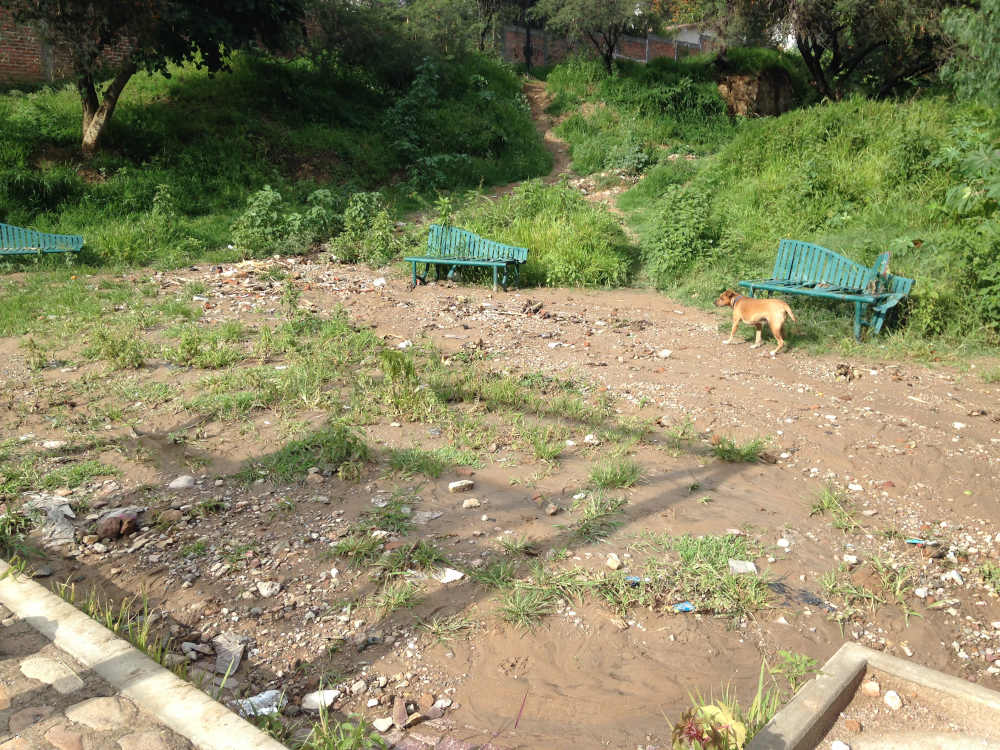
There in the park, at that part of the chapter, in the plow position, while Canela had been off somewhere in the bush for fifteen minutes, I was interrupted. A forty year old, handsome Mexican man, with the waist of his pants hanging far below his hips, exposing a large expanse of hounds-tooth boxer shorts, was standing a short distance away and below me, holding a large bag of grapes. I should mention that the ravine is a short cut up the hill to Caracol.
I shut off my mp3 player. We exchanged greetings. He observed, rhetorically, "¿Estas haciendo tu yoga?" (You are doing your yoga?) I answered in Spanish that it was my daily routine. He continued to eat his grapes. We continued to chat. I continued with the last few positions of my yoga routine, supine spinal twists. He approached and, some short distance away, on the other side of an eroded cleft in the earth, asked if he could sit down. I, myself a stranger in a strange land, his land, in a public park no less, gave him permission.
I considered his size, the heavy wooden cane I carry on our walks to defend Canela, the distance and shallow ditch between us, our solitude together in the park and decided I had a reasonable chance of defending myself if need be. Then, right on cue, Canela appeared, lying down next to me, between me and my new acquaintance, protecting me; man's best friend. I went up into a headstand, my finale.
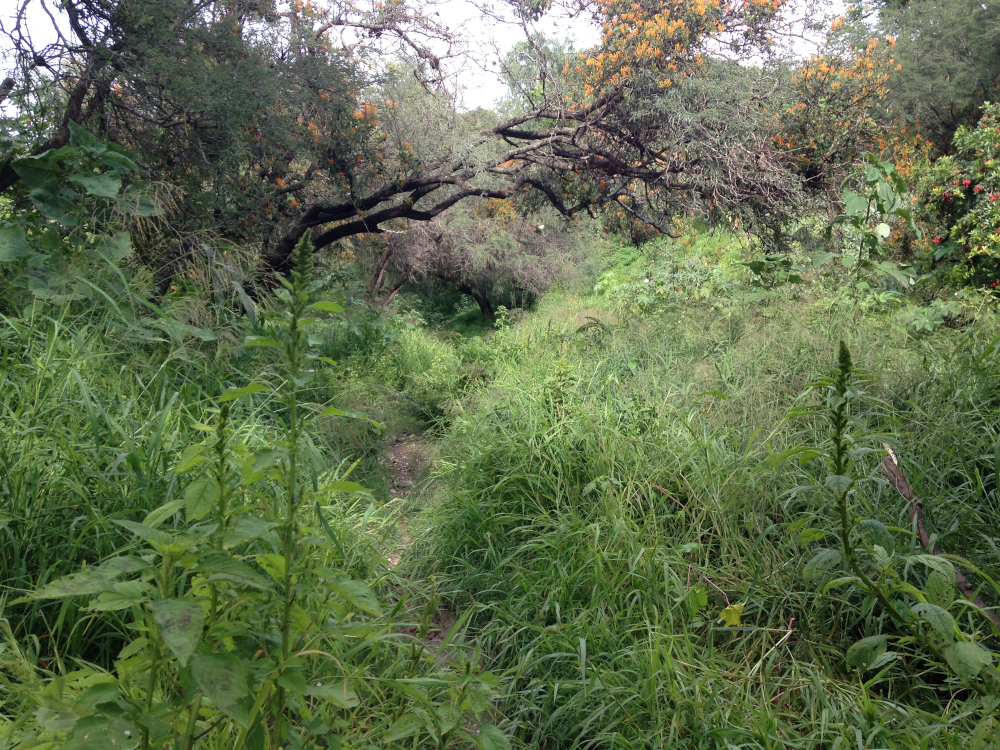
My new acquaintance, whose name I learned was Carlos, who was comporting himself well, didn't seem to be homeless. His shirt and boxers, if not his jeans, were clean. His face was shaven and his hair, though not coiffed, was cared for. Encourage by our conversation, he switched to English and, offering me some grapes.
Observing his excellent English I took a shot and asked him how long he had lived in the US. "Fourteen years," he answered, but, shamefacedly looking down, added that he had wasted his time. Yes, with such good English he could get a job, but he lacked motivation. Yes, they would hire him to answer phones, but he doesn't have the motivation to clean himself up and apply. No, he doesn't drink much. He isn't exactly homeless. He has a room up the hill below the house with the big antennae. Before that he was living for a couple of weeks in a house down the ravine aside the beginning of Calle Xichu. It was owned by someone from out of state. He asked a neighbor if he could sleep there and was told, yes, but, don't tell anyone. He came back one afternoon and the place was on fire.
Ours was a shady retreat beneath a tree on a sun-filled day. I asked and listened and answered his questions about my life. Just below us, among the delta of earth washed out of the ravine, was a fair bit of garbage: a styrofoam cup, a plastic bag... A silvery candy wrapper, catching the sun's rays, sparkled jewel-like.
I took a few grapes and told Carlos the dream I had dreamed the night before: